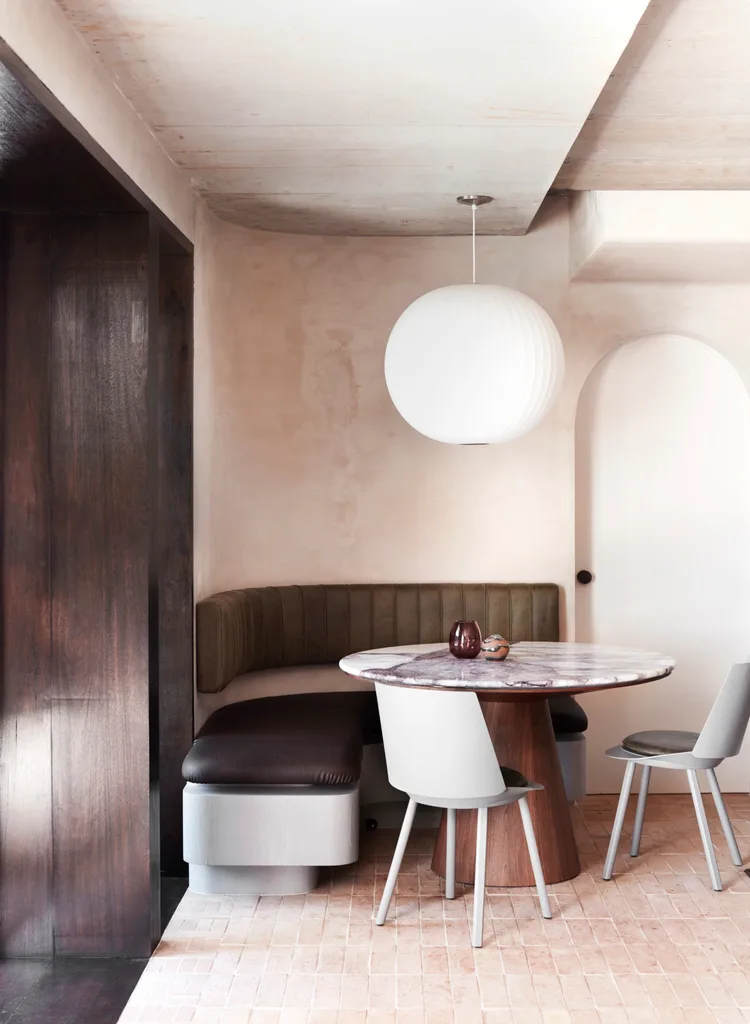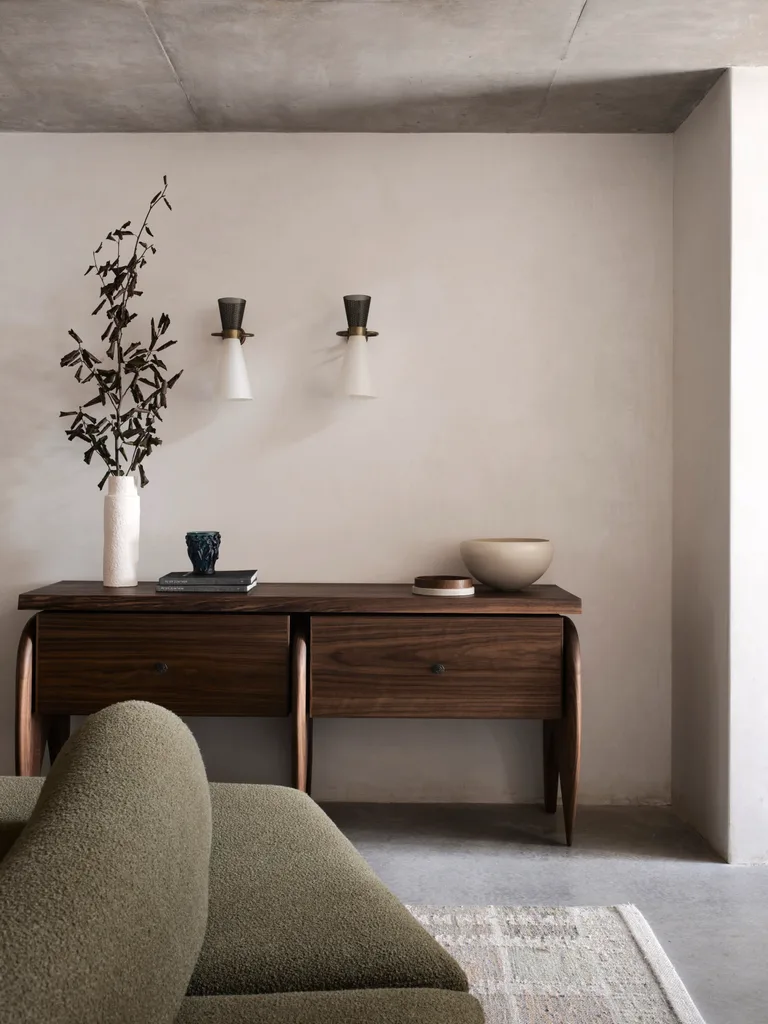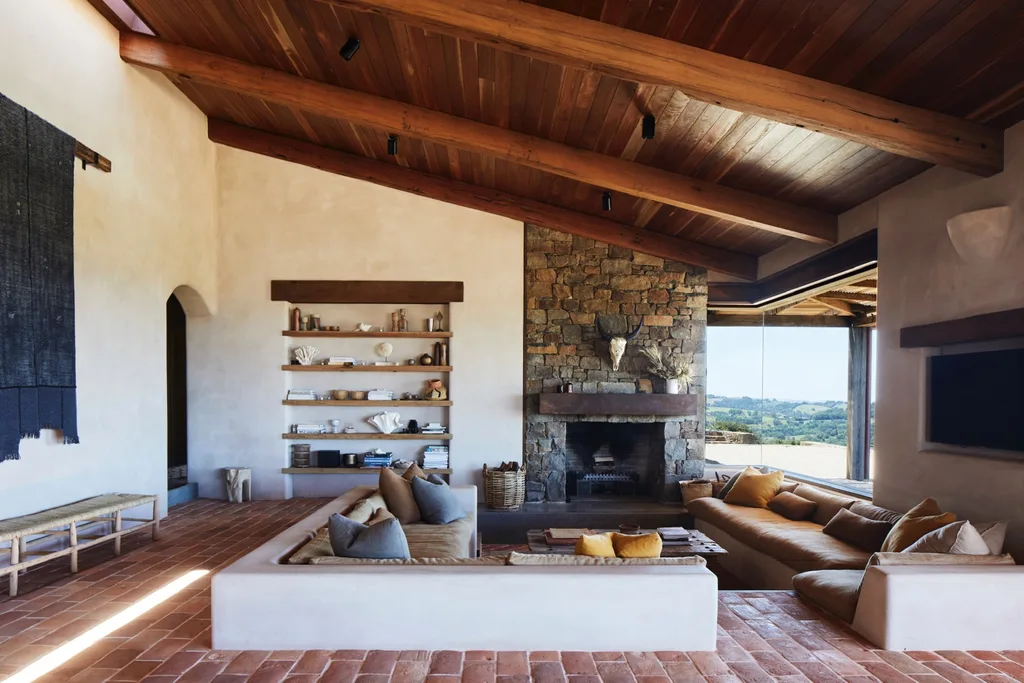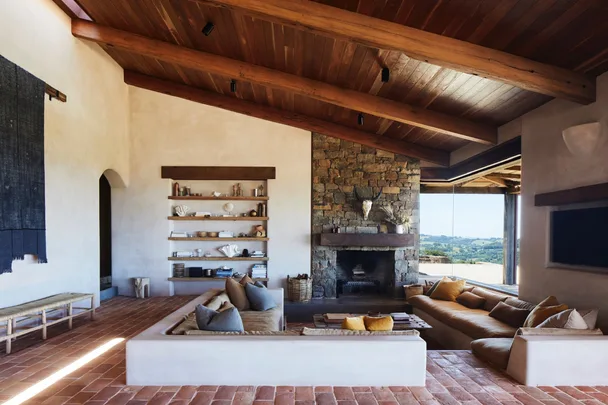If you’ve spent any time on the interior-design side of Instagram lately, you’ll likely have noticed it’s wall texture that’s doing all the talking. From soft sculptured curves to organic tactile finishes, textured walls are no longer exclusive to sequestered Mediterranean isles and rustic coastal villas.
Whether you’re embarking on a larger renovation – think grand archways, neutral hues and curved walls – or a quick makeover with textured paints, there’s an array of finish options to create the ultimate earthy sanctuary. “Textured walls make you feel something over standard plastered and painted walls,” says Georgia Ezra, interior designer and director of Studio Ezra. “They provide a depth of warmth and a layer of experience when one enters a space that has rendered or textured walls, and I believe the way a space makes you feel is incredibly significant.”

“Arches and curves are a great feature to enhance the impact of these finishes.”
Eric Moroney, Lusso
Why do we all want textured walls?
In recent years, our desire to feel connected and create a more organic and textural home has trickled into our interior choices, from layered linens to natural stones and timbers. “The trend has developed from the need and desire to connect more to the materials we use in our homes and our natural environment, to feel the mood of the interior, and this starts with the walls and how they feel in your home. The feeling that it creates in your space is much more harmonious and in touch with nature,” says Bronwyn Riedel, creative director of Bauwerk Colour. A textured natural stone such as travertine, complete with its imperfect holes and crevices, is in perfect harmony with the raw beauty of textured walls.

What surfaces are suitable for texture?
Incorporating these textures into your home isn’t limited to walls, of course; there’s a plethora of plastering techniques to suit everything from in-built vanities in bathrooms, to shelves and even beds. “Most renders can be applied to a build substrate, which is most likely framed by timber and sheeted with a plaster or timber sheet, the render is then applied to the top,” explains Georgia. “It’s a great way of making something feel more architectural. We have used cement render in our bathroom; it wraps the floors, walls and coats a sink unit which we built. It allows you to have a single finish with no grout lines or joins which is super-beautiful.” Expect movement and cracks, she adds. “This is a material that does patina with time.”

What exactly is tadelakt render?
Stepping inside a home that’s used a tadelakt render, it’s easy to imagine you’ve been transported to a palatial Turkish bathhouse. Perfect for wet areas, such as showers, basins and feature surfaces in kitchens, tadelakt has a similar soft, textural appearance to a limewash effect. “Hailing from the ancient riads and hammams of Marrakech, tadelakt is [one of] the oldest forms of render still being applied today,” says Eric Moroney, founder of Lusso and one of the few master artisans in Australia trained to apply tadelakt true to how it’s done in Morocco. “After mixing the lime plaster and applying it on walls, our artisans use a stone to simultaneously polish the finish and rub in black olive oils, which react with the lime to make it hard, highly durable and waterproof.” Due to the meticulous and laborious application by artisans, there are no grout lines which is part of the appeal as it applies seamlessly and effortlessly to curves.

What about Venetian plaster?
Do as the Romans do with the subtly textured and lustrous finish of Venetian plaster. The centuries-old veneering technique is created when pigment is added to aged slaked lime plaster. Applied in thin translucent layers, the result is a uniquely textured, soft yet polished finish, giving the appearance of depth and movement, due to the marble dust combined with lime. “Venetian plasters are stunning on walls – I absolutely adore the slight sheen you see as you move through a room with the plaster on the wall,” says Georgia. As a lime-based product, it celebrates the organic beauty of polished natural stone. Depending on the supplier, the plaster is available in a range of finishes, for example Lusso’s finishes consist of various raw materials such as Italian lime, marble, travertine, Japanese clay, Moroccan limestone and Spanish gypsum, each offering a different tactile and visual result.

How do I make textured walls modern?
If the mention of textured walls evokes memories of an interior faux pas – thank you ’90s sponge painting and popcorn ceilings – it’s important to note that unlike the loud Tuscan terracottas of the past, the new wabi-sabi inspired feature wall is all about embracing neutral tones. “Limewash really suits the current trend toward natural colours such as earth tones or dirty beiges better than conventional paints, which tend to make these colours look old-fashioned,” says Bronwyn. Look to the warmer colours that lean to brown or yellow, such as beige, cream and cashmere to create a calm ambience.

Is limewash paint a good option?
If transforming your home into a rustic Italian villa sounds like a bit of an over-commitment, a limewash paint finish, such as Bauwerk Colour, offers a less permanent alternative, while still capturing the warmth and authenticity of a grainy wall finish. “Essentially [a limewash] is limestone ground into powder form which comes alive when mixed with water and then solidifies once dried on your walls,” says Georgia. “It’s a magical option to let your walls breathe and to make the space feel amazing.” Due to the tiny particles of crushed limestone, which creates the mottled and chalky texture of the surface, limewash lends a depth and luminosity to flat walls. “When limewashing, it should cost no more than any other good quality paint finish, it is also super easy to DIY,” says Bronwyn. “The process usually takes approximately half a day or so for a room.”
 Photography: Alicia Taylor
Photography: Alicia Taylor

